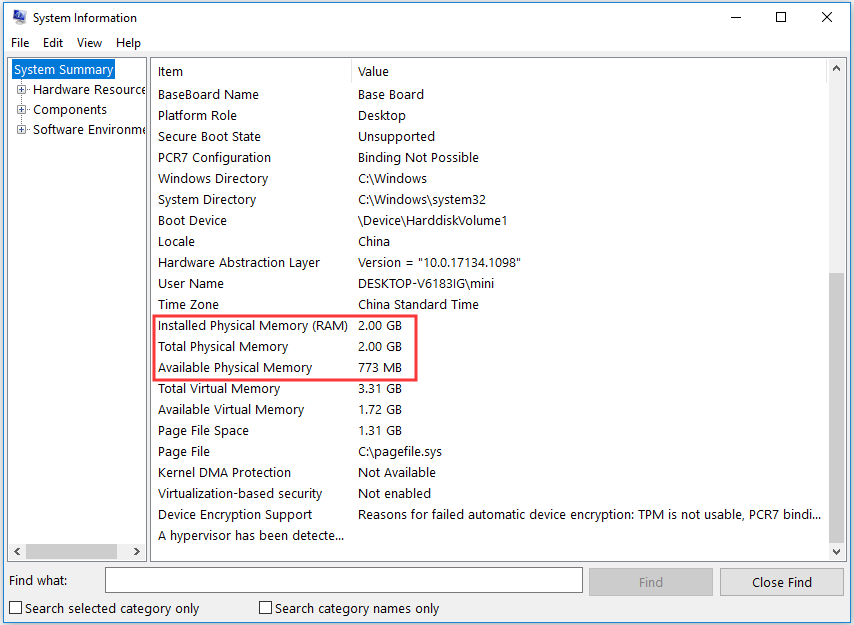

With the Task Manager open, navigate to the Performance tab. To check RAM on Windows 7, follow the same steps described above to open Windows Task Manager. In this example, we have 16 GB of total RAM, 6.2 GB of available RAM, and the RAM speed is 2400 MHz. Navigate to the Performance tab - it will open with the CPU view selected, so you’ll want to choose the Memory view from the left navigation panel.Īfter clicking on Memory, you can view your RAM speed and other details. Open up Task Manager by right-clicking on the Windows taskbar and selecting Task Manager.

To check available RAM in Windows 10, follow these steps (see below for Windows 7):

Now you know your PC’s total RAM capacity, but what about your available RAM? And also, what about your RAM speed and type? How to check available RAM and RAM speed on PC In this example, our computer has 16 GB of total RAM. Type in System Information and click on the result to open it. (If you have an Apple computer, skip ahead to our section on Mac.) If you don’t currently have an SSD, then what are you waiting for?!? The upgrade of an OS (and other) drives from HDD to SSD is one of the biggest upgrades you can make to your PC, and should be an utmost priority.Here’s how to find RAM specs on Windows 10 and how to check RAM on Windows 7. Will upgrading RAM or SSD be more beneficial?Īs is so often the case: it depends. While it’s a little bit like comparing apples and oranges, it’s still a common question so we’ll address it here. At this point, 3600MHz is considered plenty enough for most purposes, while 4400MHz is shown in some games to offer a bit more performance, but won’t be that tangible in day-to-day use. The next RAM factor to look at is speed, which again matters up to a certain point but shouldn’t supersede RAM size when buying new RAM. While size is a key thing to consider, you hit diminishing returns once you reach 16GB (and definitely 32GB) in most use cases.

Size isn’t the only thing to consider with RAM. And “futureproofing” doesn’t really hold up as an argument because RAM is likely to move onto the next DDR generation rather than keep growing in size. There’s little purpose for going above that unless you have some kind of multi-monitor, multi-software-running-simultaneously setup.


 0 kommentar(er)
0 kommentar(er)
